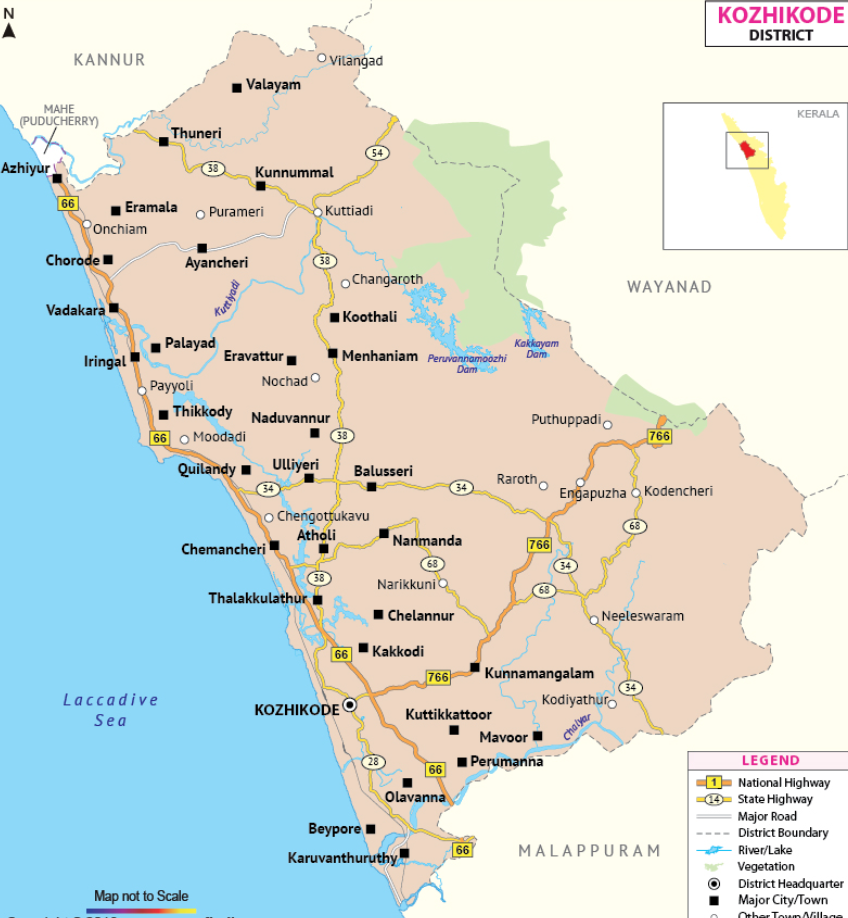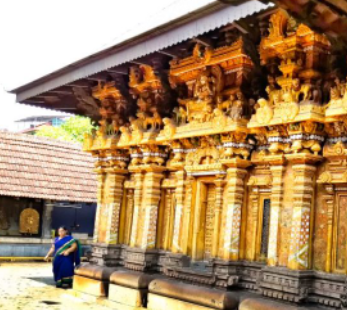Kozhikode

Tourist Destinations
Kappad
Kappad, or Kappakadavu locally, is a beach and village near Koyilandy, in the district Kozhikode, Kerala, India.A stone monument installed by government commemorates the "landing" by Vasco da Gama with the inscription, 'Vasco da Gama landed here, Kappakadavu, in the year 1498'. In 2007 a Rs. 1.5 crore program to beautify the beach was launched by [Kerala] Tourism Minister Kodiyeri Balakrishnan. It is now completed and Kappad beach has a corniche and park. The park includes a restroom, restaurant and seating.[2] The nearest major railway station is Koyilandy, about 10 km away from Kappad. The nearest airport is Calicut International Airport (CCJ), which is about 25 km from the town of Kozhikode. Private transport buses are available from the main bus stand, or visitors can reach the beach by stopping at Thiruvangoor on National Highway 66 between Kozhikode and Vadakara.


Beypore Beach
Beypore or Beypur is an ancient port town and a locality town in Kozhikode district in the state of Kerala, India. It is located opposite to Chaliyam, the estuary where the river Chaliyar empties into Arabian Sea. Beypore is part of Kozhikode Municipal Corporation. The place was formerly known as Vaypura / Vadaparappanad and also as Beydary. Tippu Sultan, ruler of Mysore, named the town "Sultan Pattanam". There is a marina and a beach while Beypore port is one of the oldest ports in Kerala, which historically traded with the Middle East. Beypore is noted for building wooden ships, known as dhows or urus in the Malayalam language. These ships were usually bought by Arab merchants for trading and fishing but are now used as tourist ships. According to Captain Iwata, founder member of the Association of Sumerian ships in Japan, Sumerian ships might have been built in Beypore. There is evidence to prove that Beypore had direct trade links with Mesopotamia and was a prominent link on the maritime silk route. The first railway line of Kerala was laid in 1861 from Tirur to Beypore (Chaliyam) passing through Tanur, Parappanangadi, Vallikkunnu, and Kadalundi.
Tali Temple
Tali temple is one of the oldest temples in Kozhikode. The temple was built by Swamy Thirumulapad. The founding and prosperity of Kozhikode city is closely linked with the sanctity of this ancient temple. It is believed that the lingam in the sanctum of the Temple was installed towards the end of Dvapara Yuga by Sri. Parasurama. The posture in the sanctum is that of Umamaheswara. Though this divine power existed from time immemorial, the attention of the citizens of Kozhikode was (bestowed on the temple) only by about 1500 years ago. Later on the temple reached its zenith during the rule of the Zamorin of Calicut,(also known as Samoothiri)who had the prestigious title Sailabdheswara. The temple to its present state was built in the 14th century.[3]The temple features majestic wood carvings, beautiful wall paintings, and roofs with intricate designs. The walls of the sanctum sanctorum (sreekovil) are built in the shape of a chariot that has brass designs and mural painting
